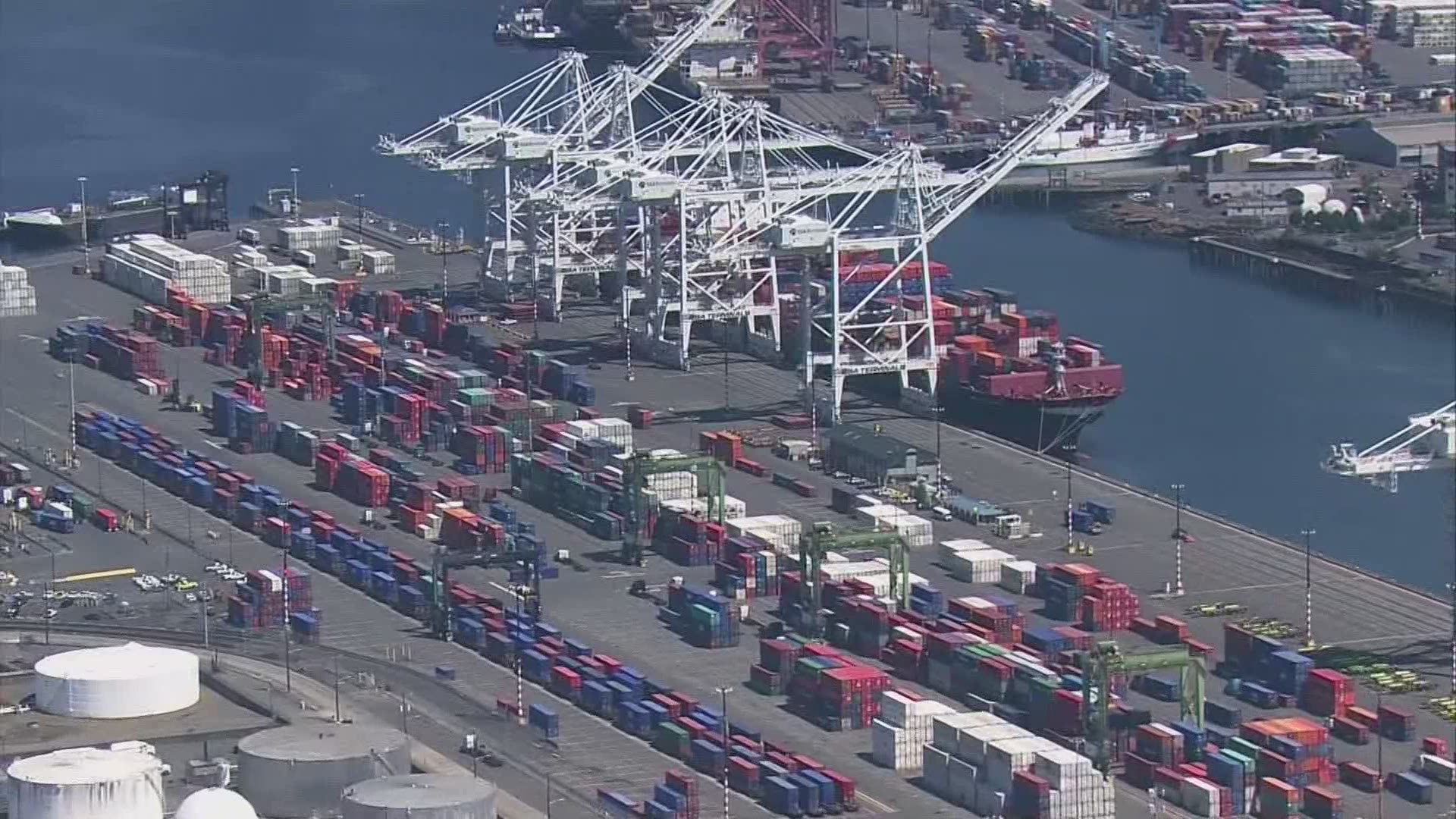SEATTLE — A group of Northwest seaports is pledging to bring their net emissions to zero in the next 30 years in an effort to combat climate change.
Officials from the Ports of Seattle and Tacoma, which comprise the Northwest Seaport Alliance, joined their counterparts from Vancouver B.C. in the announcement Wednesday morning. Together, they’re committing to completely phase out emissions from seaport-related activities by 2050.
“The climate crisis is not going away,” said Dick Marzano, Port of Tacoma Commission president and co-chair of the Northwest Seaport Alliance. “Reducing air pollution is not something we can do alone, it will take major investments to strategic action, innovative technology, and all of us working together to reach our goal of zero emissions by 2050. And I know we can do it.”
The pledge comes as part of the updated Northwest Ports Clean Air Strategy. The commitment will be a heavy lift. The ports shared data from 2015-2016 show 59% of greenhouse gas emissions in the study came from vessels, and 40% from the handling equipment and transport vehicles on hand. The remaining 1% came from administrative vehicles.
The Northwest Seaport Alliance (NWSA) was formed in 2014, combining the container traffic from Seattle and Tacoma to compete with larger ports in Los Angeles and New York. $73 billion in international trade passes through the Alliance annually, and it supports 48,000 jobs. Around 30 million tons of freight passed through the Alliance ports in 2019.
Seattle, Tacoma and Vancouver laid out various initiatives to reduce emissions, with the combined goals of modernizing and improving fleets and supporting the expansion of zero-emission infrastructure and equipment.
In Seattle, port officials hope to reach a 100% shore power connection rate for cruise ships by 2030. Shore power allows ships to plug into land-based energy, which stops them from idling large diesel engines while docked. Seattle is also looking to encourage planning and policy for zero-emission energy on the waterfront, which will require support from various lawmakers.
Already, the strategy has helped make major reductions, officials said. NWSA's Clean Truck program tackled diesel emissions, and as of 2019, all trucks entering terminals must have an engine from 2007 or newer, which meet stricter emissions standards.
Seattle was also the first port in the world to offer shore power at two cruise berths, officials said.
"In order for us to meet these ambitious long-term targets that benefit the climate and surrounding communities, it's essential that the state and federal government partner with the Ports to provide progressive policies and financial assistance that create incentives for their adoption prior to regulatory obligations,” said Fred Felleman, Port of Seattle Commission President and Co-Chair of The Northwest Seaport Alliance. “Given the looming climate crisis, it's also critical to recognize that we are committed to making near-term progress in collaboration with our business and community partners."
Tacoma is looking to drastically improve the energy efficiency of buildings and transition its fleet of administrative vehicles to plug-in hybrid or electric cars by 2030.
Under the Northwest Seaport Alliance Banner, both ports plan to expand shore power infrastructure and promote a transition to zero-emission trucks. In the meantime, they hope to reduce diesel emissions with replacement incentives and renewable fuels.
Vancouver said among other efforts, it plans to expand its EcoAction program, which offers discounts to cleaner and quieter ships.
Though a net-zero emissions goal is lofty, scientists have been warning for years that the earth is in a ‘climate emergency,’ and 2050 goals may be too little, too late. When asked about this, officials from the ports said they hope to exceed these goals.
“2050 is the floor, not the ceiling,” said Jason Jordan of the Northwest Seaport Alliance and Port of Tacoma. “And we'll be doing everything we possibly can to align up our resources, staff and financial resources to move as fast as we possibly can and hopefully beat the 2050 deadline that we've set for ourselves.”

